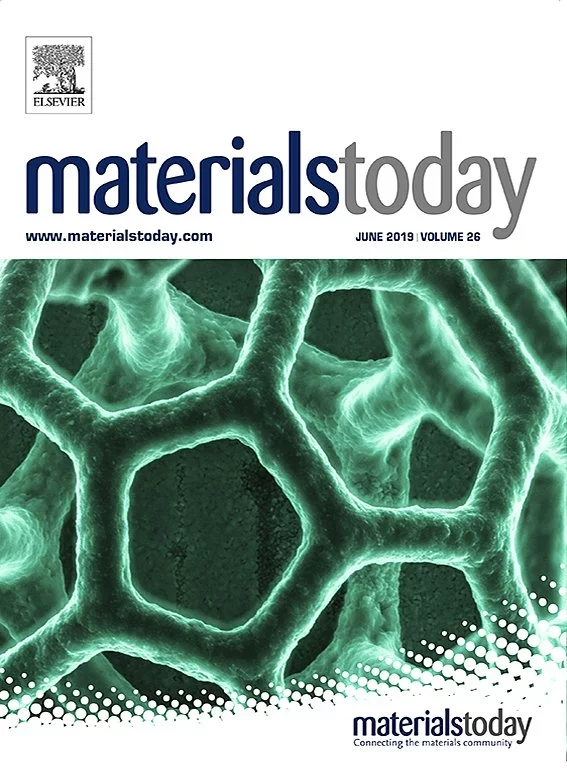Three-dimensional magnetic nanostructures developed at LMN in collaboration with NUM-LMX and University of Glasgow have been featured on the cover of Materials Today. Recent studies of 3D magnetic nanostructures, mostly cylinders and nanotubes, have demonstrated that curvature could give rise to novel magnetochiral effects in the presence of external fields. Such effects have so far been predicted by theory and by simulations and are promising for applications, in particular for data storage concepts, which rely on magnetic domain walls to store bits of information. However, experimental realization of free-form 3D nanostructures remained challenging. Now we developed fabrication aproach based on three-dimensional laser lithography and resist post-processing to create free-form three-dimensional mesoscopic magnetic structures. Polymerized scaffolds are pyrolyzed and treated in oxygen plasma to scale them down to sizes relevant for nano-magnetic investigations. The used resists are typically nonmagnetic, thus post-processed scaffolds need to be further altered to endow them with magnetic properties. This was achieved by depositing a uniform conductive film of iridium using atomic layer deposition followed by electroplating of a magnetic material – in this case, nickel. The result is a mesoscale 3D structure composed of magnetic nanotubes. Further studies of these architectures are expected to give insights into three-dimensional nanomagnetism and provide a basis for the design of novel magnetic microdevices.
Original Publication
Sebastian Gliga, Gediminas Seniutinas, Anja Weber, Christian David, Architectural structures open new dimensions in magnetism. Magnetic buckyballs. Materials Today, Volume 26, June 2019, pp 100-101.


